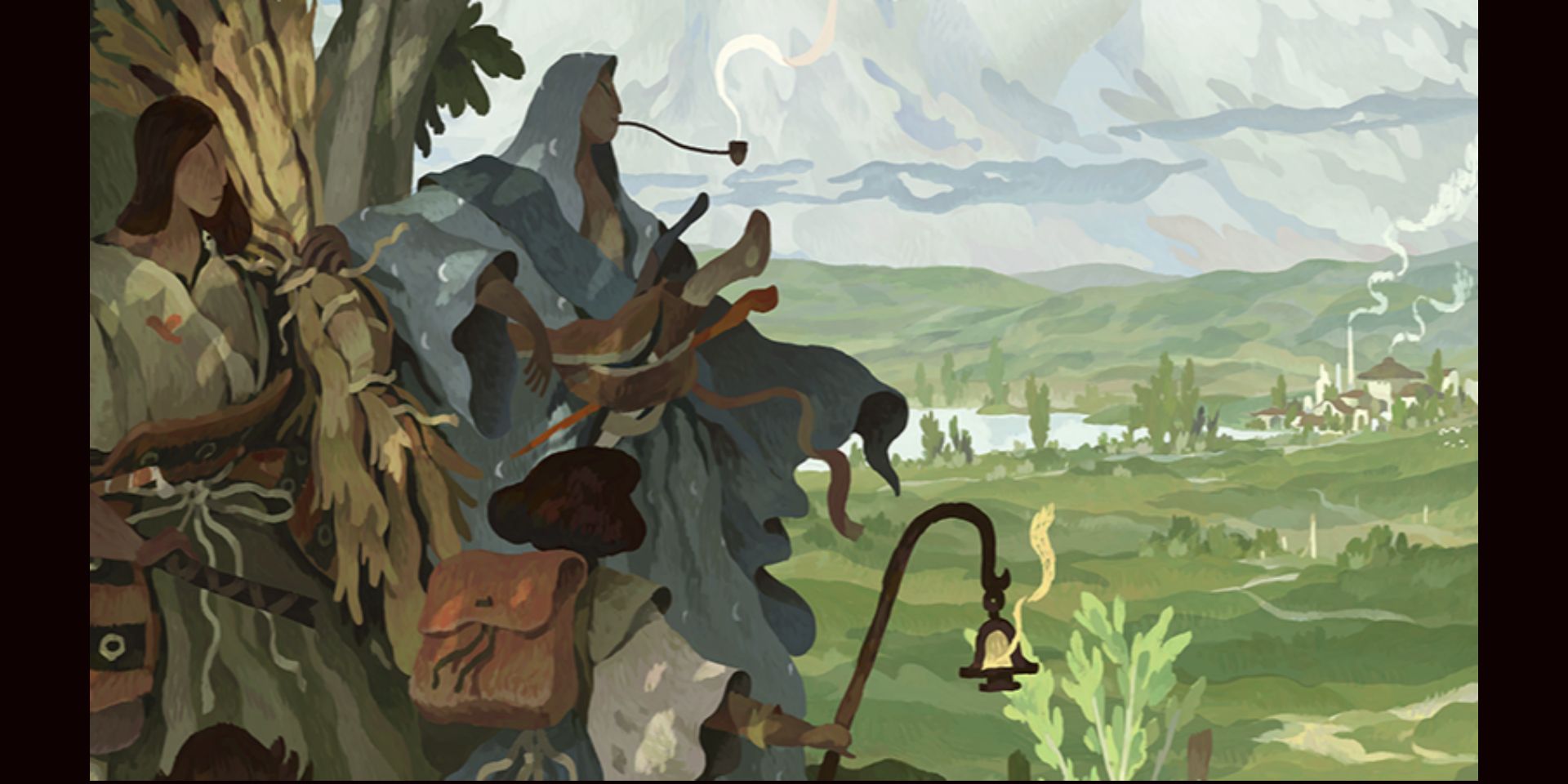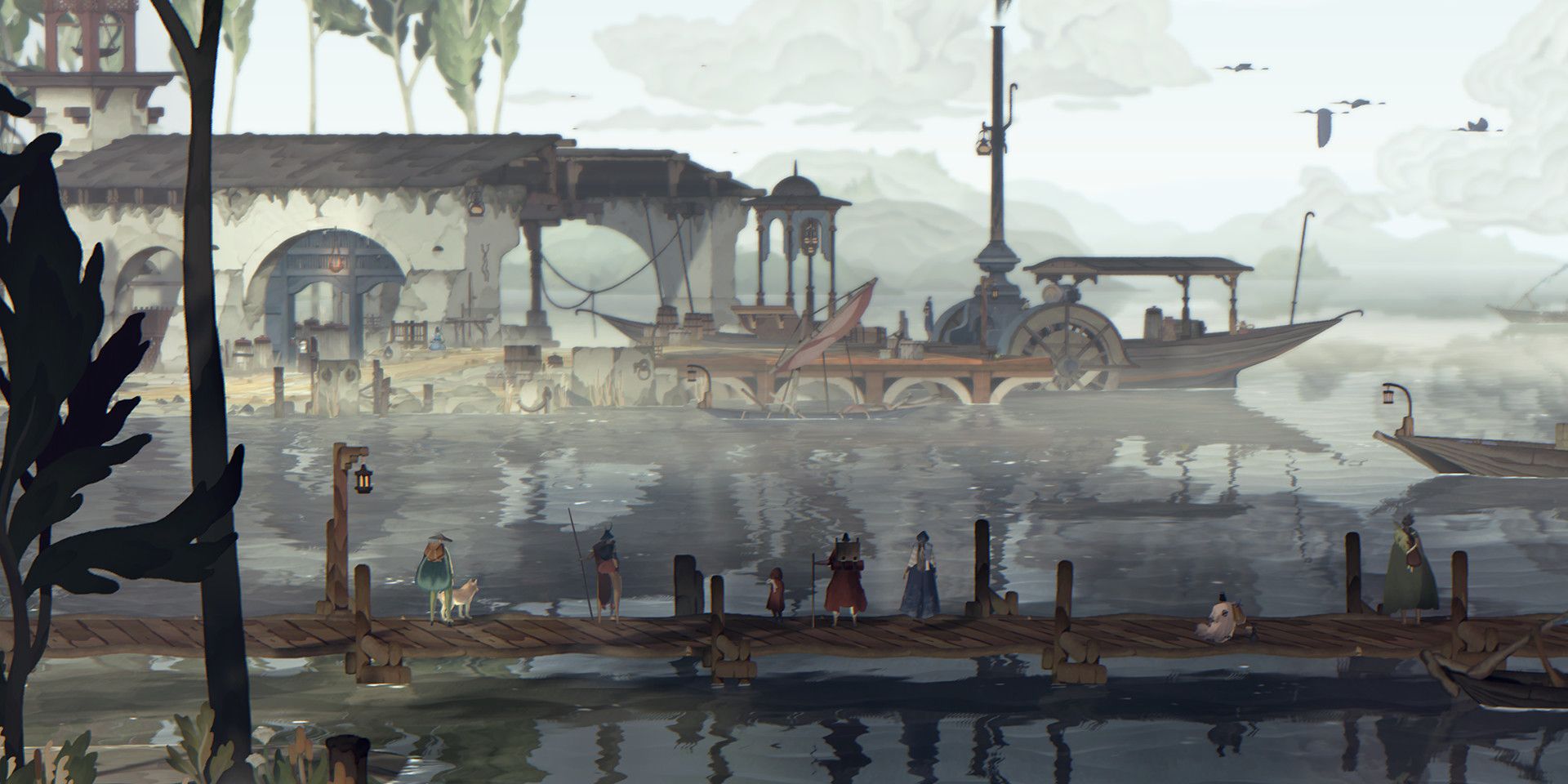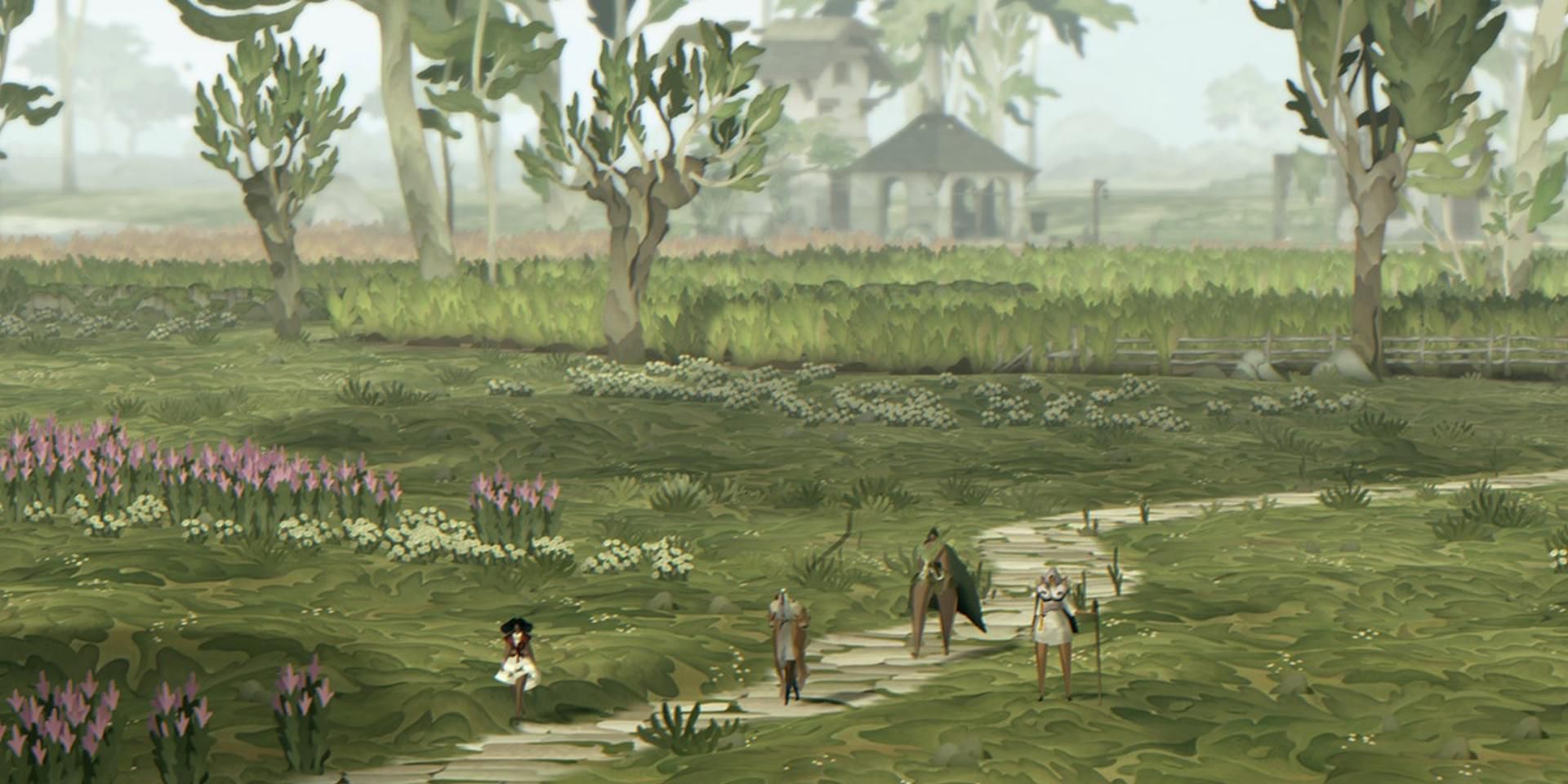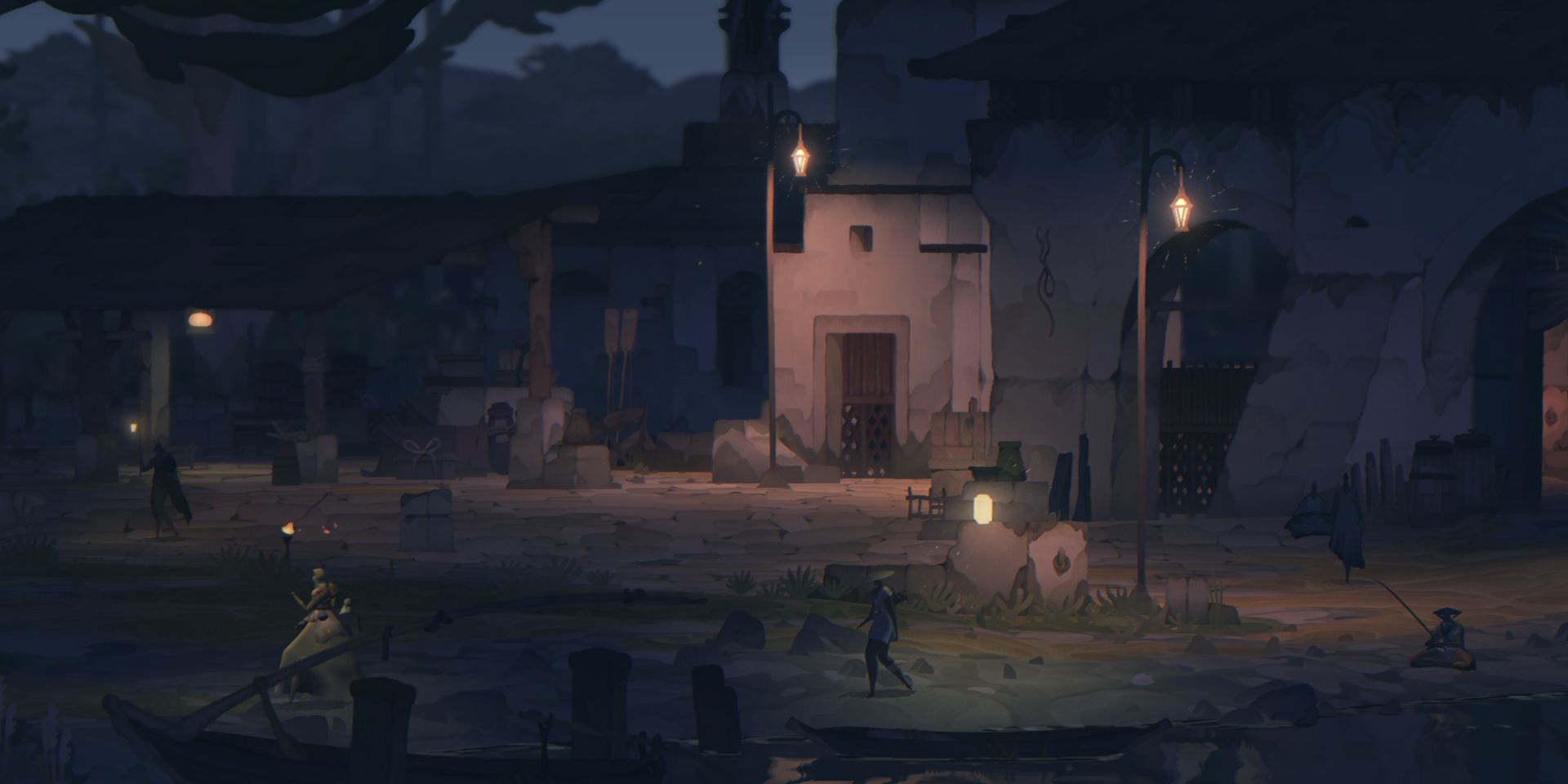Massive multiplayer roleplaying games like World Of Warcraft are frequently designed to immerse their players in fast-paced activity and struggle – the struggle to complete a quest, gain a new level, or acquire a rare piece of loot. The upcoming "tiny multiplayer online" game Book Of Travels takes a different approach, drawing on the atmosphere and design principles of soothing games like Journey to immerse players in a more relaxing experience. Early footage of Book Of Travels released by the Might And Delight Studio reveals an Arcadian painted world of beautiful countrysides and early industrial towns, a world where players can explore new lands, light campfires, brew teas, and enjoy the process of working towards their goals.
The dirty secrets behind the popularity of many single-player and multiplayer roleplaying games is how they use the lure of accomplishment and rewards to keep people playing, like a rat in a psychologist's maze pulling switches to get a food pellet. The appeal of roleplaying games, after all, is that they take place in a world full of things to do, from gaining experience points and earning money to overcoming fearsome bosses and creating uniquely powerful RPG character builds. A player who spends too much time rushing towards their end-goal, however, will forget to stop and smell the metaphorical roses.
In recent years, several indie developers have been pursuing a new game design philosophy focused on atmospheric environments and relaxing travel mechanics over a constant pursuit of power. Journey, for instance, is an co-operative game about dancing through ancient ruins with a partner, while Outward is an RPG where a backpack full of tasty provisions is just as satisfying as a treasure chest full of loot. Developers at the Might And Delight studio have embraced this design philosophy in their development of Book Of Travels, crafting its gameplay, visuals, and RPG mechanics so players are free to relish the journey rather than obsess over the destination.
Book Of Travels' Graphics: Player Travels Through Paintings
Computer RPGs like Pillars of Eternity are isometrically rendered, with characters models moving against a painted backdrop, while other computer RPGs use intricately rendered 3D terrain. The graphics of Book Of Travels contain elements of both these paradigms, letting players move through a flat three-dimensional plane filled with two-dimensional assets. Every building, cloud, tree, and shrine in Book of Travels is painted by hand, making the process of navigating the game world resemble scenes from surreal fantasy stories where someone dives into a painting.
Book Of Travels' Magic Is Rustic and Artistic
In the Book of Travels News Hub on Steam, designers from Might And Delight have published a series of "dev diaries" describing their creative process, explaining the choices that went into the creation of features like music, graphics, game menus, character creation, and magic. The world of Book of Travels, a verdant early-industrial country called the Braided Shore, is filled with ancient ruins, supernatural creatures, wandering bandits, and other classic tropes of the fantasy genre, but presents these tropes in a gentle, relatively tranquil way: nowhere is this more apparent than in the two core magic systems of the game, "Teas" and "Knots."
"Teas" in Book of Travels are essentially magical potions, prepared by collecting certain types of herbs and flowers in the wild, then brewing them together based on the instructions of a certain recipe. Drinking a Tea grants players a long-lasting boon such as extra health or resistance to elemental damage, but only one of these boons can be active at a time (presumable so players won't obsessively hoard brews of tea for challenging scenarios). "Knots," on the other hand, take on the roll of "scroll" style spells; by tying a cord into a complex and unique knot, a player can store a powerful but short term magical effect, to be unleashed the moment they unravel the knot. The magical effects of "Knots" range from transforming into animals to altering the weather, applications of magic similar to the "Wind-Knot" magical rituals used by historical hedge-witches and superstitious sailors.
Unlike the academic sorcery seen in most fantasy RPGs, the "Teas" and "Knot" magic seen in Book of Travels has a more rustic, working-class feel. Instead of studying with a powerful sorcerer and tracking down ancient spellbooks, a player in Book of Travels will learn new Tea recipes by talking to the owners of tea houses, or find new Knot configurations by finding symbols carved on stone pillars (similar to the Word Walls of Skyrim). Depending on their locale, PCs might also learn new Tea recipes, Knots, abilities, and passives by talking to random travelers or villagers, a gameplay mechanic that encourages players to talk to strangers and investigate strange shapes in the distance.
Book Of Travels Rewards Players For Exploring
The Book of Travels gameplay revealed by trailers so far is very sedate compared to other RPGs, showing players and groups of players wandering through mystic forests, bustling settlements, and railroad tracks at a measured trot. There are narrative quests to pursue, of course, and special "Endeavors" that can only be solved by a party of strangers. For the most part, though, players of Book Of Travels are free to explore the land of Braided Shore at their own pace (in contrast to the deadline-limited quests seen in RPGs like Outward). Activities such as fishing, cooking, trading, brewing, crafting, and exploration reward players for "stopping and smelling the roses," particularly if those roses can be used to brew a brand new Tea.
Book of Travels, as an MMO, has less in common with World of Warcraft and more in common with Journey, a game developers at Might and Delight have cited as an inspiration. Both titles have multiplayer gameplay designed to be entertaining but not mandatory, using non-verbal forms of communication such as gestures and trail signs to encourage pleasant communication and collaboration. More importantly, Journey and Book of Travels, as their titles imply, focus on the process of reaching a destination rather than the destination itself. From the looks of things, players of the Book of Travels RPG will be able to fight evil, avenge the weak, and discover secrets lost to time... but the most enjoyable part of their gaming experience will be those tranquil moments where the sky is clear, the horizon stretches far, and the road winds long ahead.
Source: Steam




